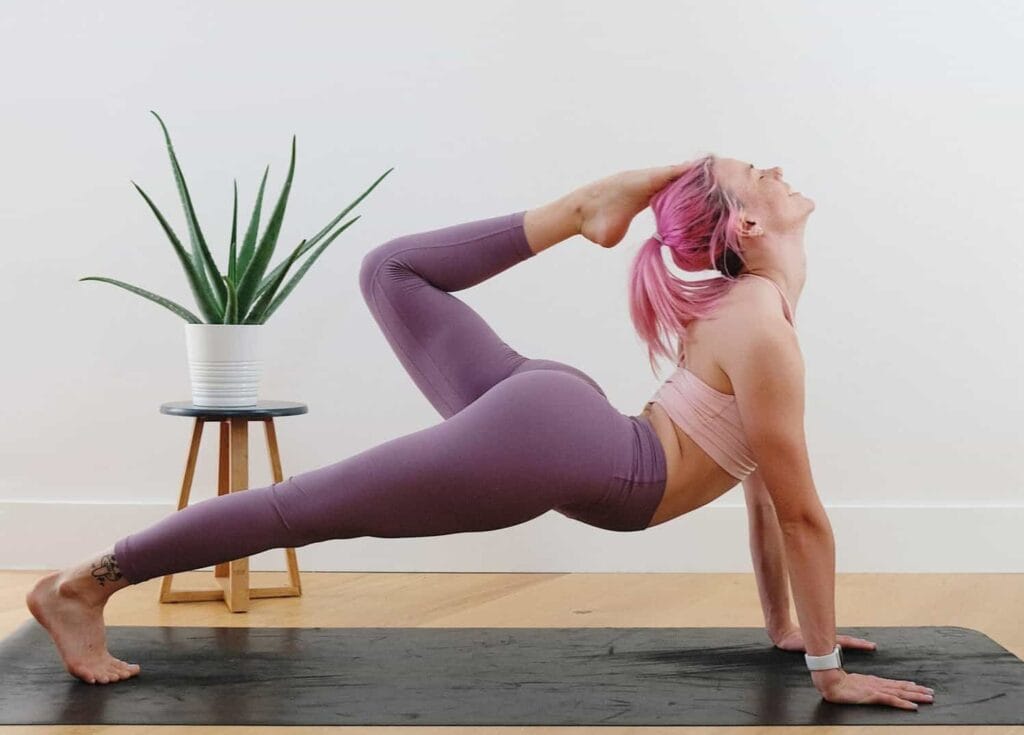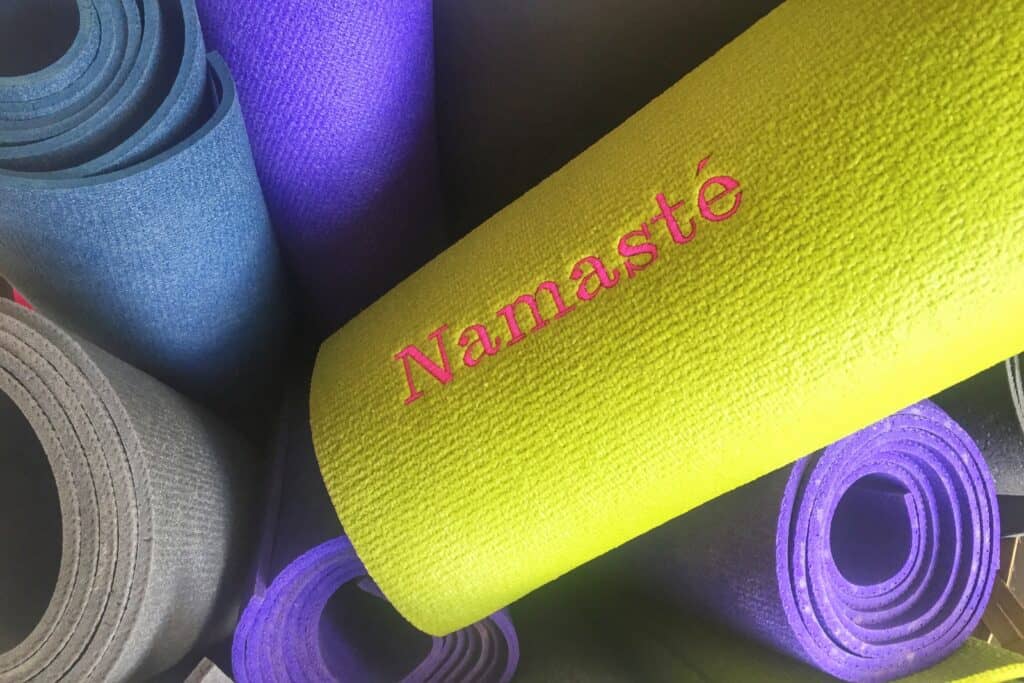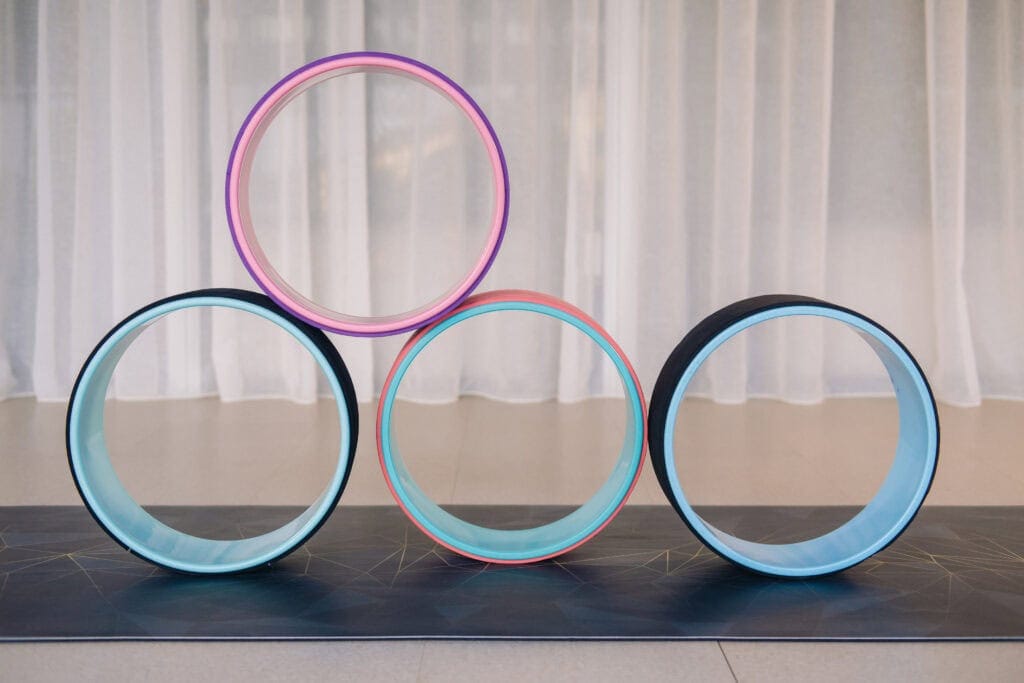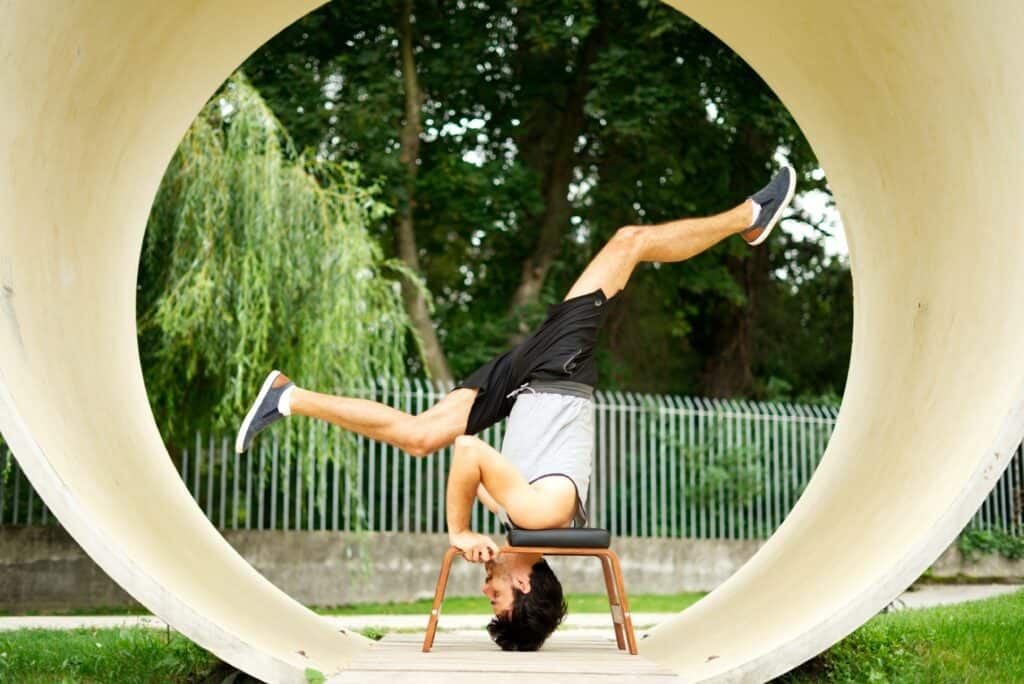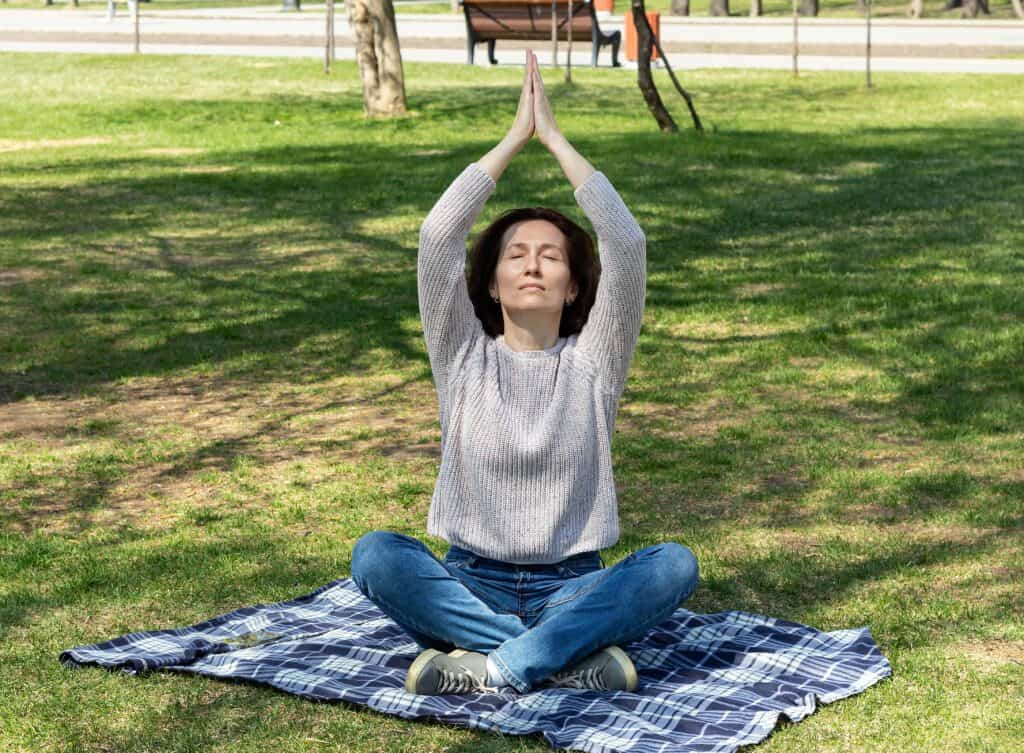Yoga poses benefits are extensive and can greatly impact one’s overall well-being. In this blog post, we will delve into the various types of yoga poses, ranging from basic beginner-friendly positions to more advanced standing and balancing postures. Exploring these varied postures can yield numerous benefits, such as increased suppleness, equilibrium, muscular power and even a heightened immune system.
We will also provide essential tips for mastering different yoga poses with proper alignment and breath control techniques. Additionally, we’ll discuss popular pose series such as Sun Salutations (Surya Namaskar) and Moon Salutations (Chandra Namaskar), which serve as foundational sequences in many yoga styles.
Lastly, this comprehensive guide will cover therapeutic applications of specific poses for back pain relief or during pregnancy while addressing necessary precautions based on certain medical conditions. Furthermore, incorporating bandha techniques into your practice is another aspect that contributes to maximizing the benefits of each pose. So join us in exploring the transformative power of a consistent yoga practice!
Types of Yoga Poses
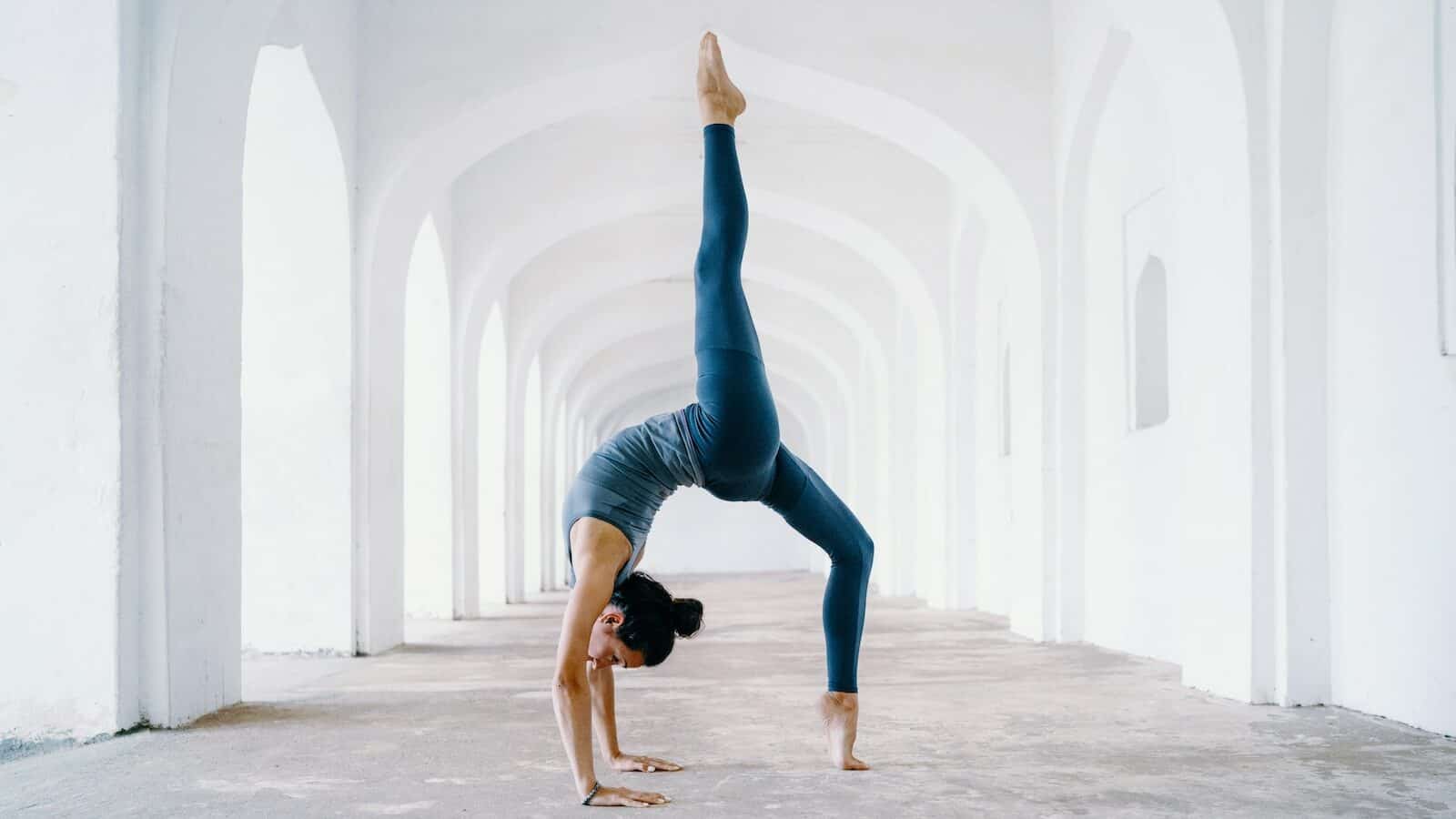
Explore the different types of yoga poses that cater to various skill levels and purposes. From basic poses for beginners to advanced asanas, this section will provide an overview of some popular pose categories found in the vast world of yoga.
Basic Poses for Beginners
For those with a more experienced yoga practice, it is recommended to begin with poses that offer an appropriate challenge and help develop skill. Some beginner-friendly postures include:
Standing and Balancing Postures
Focusing on stability and strength, standing and balancing postures are integral components in most yoga practices. Examples include:
Seated and Forward Bend Positions
These poses often target flexibility, relaxation, and introspection. Some common seated and forward bend positions are:
- Seated Forward Bend (Paschimottanasana)
- Bound Angle Pose (Baddha Konasana)
- Head-to-Knee Forward Bend (Janu Sirsasana)
Twists and Backbends
Aiding in spinal health, digestion, and overall vitality, twists and backbends can be both energizing and restorative. Examples of these postures include:
- Half Lord of the Fishes Pose (Ardha Matsyendrasana)
- Cobra Pose (Bhujangasana)
- Bridge Pose (Setu Bandhasarvangasna)
Yoga poses offer a variety of benefits, from enhancing flexibility and balance to strengthening muscles. By practicing the various types of yoga postures, you can enjoy these physical and mental health benefits even further. Next, we will explore some of the specific advantages that come with performing different yoga poses.
Benefits of Practicing Yoga Poses

Uncover the multifarious advantages that come with routinely performing yoga, such as physical, psychological and emotional improvements. Incorporating these poses into your routine can improve overall well-being while also targeting specific health concerns. In this section, we will delve into some key advantages of incorporating yoga poses in your daily life.
Enhancing Flexibility and Balance
By regularly stretching and practicing yoga poses, your body can become more flexible, enabling a wider range of motion in joints and improved posture. As you engage in various yoga stretches, your muscles become more pliable, allowing for a greater range of motion in joints. Over time, this increased flexibility can lead to better posture and reduced risk of injury during other physical activities.
In addition to enhanced flexibility, regular practice helps develop balance by strengthening stabilizing muscles throughout the body. This improved sense of equilibrium not only aids in preventing falls but also promotes mental clarity and focus.
Strengthening Muscles
Yoga poses often require engaging multiple muscle groups simultaneously, leading to increased strength over time as you hold postures or transition between them smoothly. Regular practice can help tone major muscle groups such as core abdominals, glutes, arms, and legs – promoting functional fitness necessary for everyday tasks like lifting heavy objects or maintaining proper posture at work.
Reducing Stress Levels
Yoga’s calming effect can be experienced through breath control and mindful movement, allowing practitioners to achieve a tranquil state of mind that helps alleviate stress-related issues such as anxiety, depression, or chronic health problems. By focusing on breath control and mindful movement during each pose session, practitioners can achieve a sense of mental clarity and emotional balance that carries over into other aspects of their lives. This stress reduction is particularly beneficial for those suffering from anxiety, depression, or chronic stress-related health issues.
Boosting Immunity
The practice of yoga has been linked to improved immune system function, which helps protect the body against illness and disease. The combination of physical movement, deep breathing exercises, and relaxation techniques stimulates the lymphatic system – responsible for filtering out toxins and waste products from the bloodstream – thereby enhancing overall immunity.
- Breathing exercises: Pranayama techniques help increase lung capacity and oxygenation throughout the body.
- Inversions: Poses like headstands or shoulder stands encourage blood flow to vital organs while also stimulating lymphatic drainage.
- Meditation: Mindfulness practices promote relaxation response in your nervous system leading to reduced inflammation levels associated with compromised immunity.
Incorporating regular yoga poses into your routine offers numerous benefits ranging from increased flexibility to reduced stress levels. As you continue exploring different postures within this ancient practice, you will likely discover even more advantages tailored specifically towards your unique needs and goals on your journey toward wellness.
Yoga postures provide an array of physical and mental gains, from heightened suppleness and equilibrium to lowered levels of stress. With the right tips for mastering different yoga poses, you can maximize your results in order to achieve an even greater level of wellbeing.
Tips for Mastering Different Yoga Poses

Learn valuable tips on how to effectively practice various yoga poses safely while maximizing their potential benefits. This section provides guidance on alignment, breath control, modifications, and progressions, along with other essential techniques needed when exploring new or challenging postures.
Importance of Proper Alignment
Proper alignment is crucial in practicing yoga poses as it ensures safety and effectiveness. Misalignment can lead to injuries and limit the benefits you gain from each pose. To improve your alignment, focus on understanding the anatomical structure of your body and observe experienced practitioners or instructors during class. Additionally, consider attending workshops that specifically address proper alignment in different poses.
Using Props for Support or Modification
Incorporating props like blocks, straps, bolsters and blankets into your practice can help support correct posture and make certain positions more accessible for beginners or those with limited flexibility. For example:
- Blocks: Can be used under hands in standing forward bends to bring the ground closer if hamstrings are tight.
- Bolsters: Provide support during restorative poses like Pigeon Pose (Eka Pada Rajakapotasana) by placing them underneath the hips.
- Straps: Assist with stretching exercises such as Reclining Hand-to-Big-Toe Pose (Supta Padangusthasana).
The Role of Breath Control in Mastering a Pose
Pranayama, or breath control, is a critical element of any successful yoga session. Proper breathing techniques can help you maintain focus, balance and relaxation while performing poses. When practicing challenging postures, remember to breathe deeply and evenly through the nose without holding your breath. This will allow for better oxygenation of muscles and increased mental clarity.
Progression Strategies from Beginner to Advanced
Moving from beginner yoga to advanced yoga practice requires patience, consistency and gradual progression. Here are some tips for progressing safely:
- Start with foundational poses: Build strength and flexibility by mastering basic asanas before attempting more complex ones.
- Incorporate variations: As you become comfortable with a pose, try adding modifications or variations that challenge different muscle groups or increase intensity.
- Create balanced routines: Include a mix of standing, seated, twisting and balancing poses in each session to ensure overall development.
- Frequent practice: Aim for at least three sessions per week; consistency is key when working towards mastery.
By mastering the basics of alignment, breath control and proper use of props for support or modification, you will be well on your way to becoming an expert in yoga poses. Moving onto popular pose series and sequences such as Sun Salutations (Surya Namaskar), Moon Salutations (Chandra Namaskar) and Warrior Sequence (Virabhadrasana Series), let us explore how these can help enhance our practice even further.
Popular Pose Series & Sequences
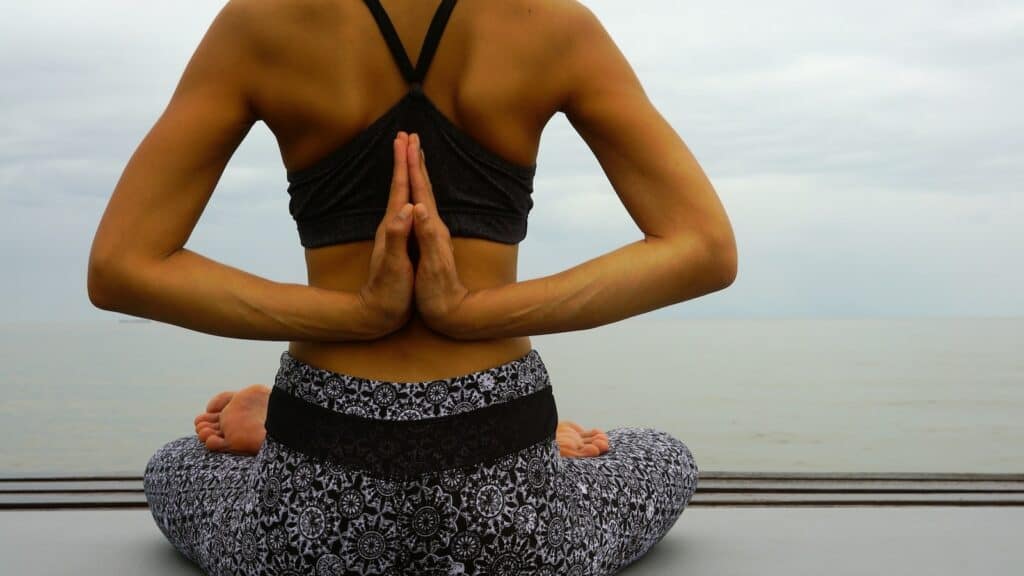
Familiarize yourself with some widely practiced sequences within the global yogic community. These series are designed around specific themes or goals like improving strength or flexibility; they often include several interconnected postures performed in a particular order.
Sun Salutations (Surya Namaskar)
Sun Salutations, also known as Surya Namaskar, is a sequence of 12 yoga poses that flow seamlessly from one to another, synchronizing breath and movement. This dynamic practice helps increase flexibility, build strength, and warm up the body for more advanced poses. It is typically performed at the beginning of a yoga class as an invocation to the sun’s energy and serves as an excellent aerobic exercise when done at a faster pace.
- Tadasana (Mountain Pose)
- Urdhva Hastasana (Upward Salute)
- Uttanasana (Standing Forward Bend)
- Anjaneyasana (Low Lunge)
- Plank Pose
- Chaturanga Dandasana (Four-Limbed Staff Pose)
Moon Salutations(Chandra Namaskar)
Moon salutations, also known as Chandra Namaskar, are a lesser-known but equally powerful counterpart to Sun Salutations. They focus on cultivating lunar energy, which promotes introspection, cooling, and relaxation. This sequence can be particularly beneficial during times of high stress or before bedtime to encourage restful sleep. Some common poses included in Moon Salutations are:
- Tadasana ( Mountain Pose )
- Ardha Chandrasana ( Half Moon Pose )
- Malasana ( Garland Pose )
- Anjaneyasana(Low Lunge)
Warrior Sequence(Virabhadrasana Series)
Warrior poses, or Virabhadrasanas, comprise a series of powerful standing postures that help develop strength, stamina, and balance. These asanas represent the mythological warrior Virabhadra and symbolize our inner strength to face challenges in life. The three main variations of this sequence are:
- Virabhadrasana I(Warrior I)
- Virabhadrasana II(Warrior II)
- Virabhadrasana III(Warrior III)
Popular Pose Series & Sequences can help practitioners to deepen their practice, improve posture and increase strength. With the right guidance, therapeutic applications of yoga poses can be explored safely; this is why it’s important to understand the potential risks associated with certain postures before attempting them.
Therapeutic Applications & Precautions

Yoga is known for its numerous health benefits, but it’s essential to understand how certain poses can be used therapeutically and when to avoid or modify specific postures. In this section, we will discuss how yoga can address common health issues while also emphasizing the importance of safety and precautions for different populations.
Yoga Poses for Back Pain Relief
Back pain relief is one of the most sought-after benefits of practicing yoga. Many poses help alleviate tension in the back muscles and promote proper spinal alignment. Some effective poses include:
- Cat-Cow Pose (Marjaryasana-Bitilasana)
- Child’s Pose (Balasana)
- Puppy Pose (Anahatasana)
- Sphinx Pose (Salamba Bhujangasana)
- Bridging Pose (Setu Bandha Sarvangasana)
Precautions During Pregnancy
Pregnant women may find prenatal yoga beneficial, as it can help enhance flexibility, balance and strength needed during pregnancy and childbirth. However, there are some important precautions to consider:
- Avoid deep twists that compress the abdomen.
- Avoid lying on your stomach after the first trimester.
- Modify poses that require balance by using a wall or chair for support.
- Avoid inversions, as they may cause dizziness and increased blood pressure.
Poses to Avoid with Certain Medical Conditions
While yoga can be beneficial for many health conditions, some postures should be avoided or modified depending on individual circumstances. Here are some general guidelines:
- If you have high blood pressure, avoid inverted poses like Headstand (Sirsasana) and Shoulder Stand (Sarvangasana). It is wise to avoid poses that require your head to be lower than your heart.
- If you have scoliosis, avoid the Cobra pose as it might worsen symptoms.
- If you have a herniated disc or osteoporosis, you should avoid the Forward-Bending pose, the Standing Forward Bend, and the Downward-Facing Dog pose.
- If you have glaucoma, avoid inverted poses such as Headstand, Shoulder Stand, and Handstand.
It is essential to be mindful of the possible therapeutic uses and safety considerations when engaging in yoga, so as to make wise choices regarding which poses are suitable for one’s individual needs. By incorporating bandha techniques into your practice, you will not only benefit from their unique effects but also gain a deeper understanding of the power of breath in yoga.
Incorporating Bandha Techniques in Yoga Practice

Explore the concept of bandhas, which are internal body locks used in various yoga practices. Learn about their significance, benefits, and techniques on incorporating them into your daily practice alongside traditional asanas.
Types of Bandhas (Mula Bandha, Uddiyana Bandha, Jalandhara Bandha)
The three primary bandhas practiced within yoga are Mula Bandha (root lock), Uddiyana Bandha (abdominal lock), and Jalandhara Bandha (throat lock). Each serves a unique purpose in regulating energy flow throughout the body:
- Mula Bandha: Engaging this root lock involves contracting the pelvic floor muscles to create an upward lifting sensation. This action is believed to help stabilize the spine and pelvis while enhancing focus during meditation.
- Uddiyana Bandha: To activate this abdominal lock, exhale fully before drawing your navel inward and upward towards your spine. Practicing Uddiyana can aid digestion by stimulating blood flow to internal organs while also promoting core strength.
- Jalandhara Bandha: By gently tucking your chin towards your chest while lengthening through the back of your neck, you engage this throat lock. It’s said that practicing Jalandhara helps regulate thyroid function and balance hormonal activity within the body.
Benefits of Integrating Bandhas into Your Practice
Including these subtle energetic locks within different poses can provide numerous physical and mental benefits for practitioners such as:
- Promoting proper alignment during postures
- Enhancing concentration and focus during meditation
- Strengthening the body’s core muscles
- Regulating energy flow throughout the body, thus promoting overall well-being
How to Incorporate Bandhas within Different Pose Categories
To effectively integrate bandha techniques into your yoga practice, consider incorporating them in various pose categories:
- Inversions: Engaging Mula Bandha can provide additional stability and control when practicing inversions like headstand or handstand.
- Seated Poses: Activate Uddiyana Bandha while seated in poses such as forward bends or twists to promote better digestion and stimulate internal organs.
Frequently Asked Questions Yoga Poses Benefits
What are the benefits of yoga poses?
The benefits of yoga poses include enhancing flexibility and balance, strengthening muscles, reducing stress levels, boosting immunity, and promoting overall wellbeing. Regular practice can also improve posture, increase energy levels, and support mental clarity and focus. Harvard Health provides a comprehensive overview of these advantages.
What are the benefits of yoga articles?
Yoga articles provide valuable information on various aspects of yoga practice such as pose tutorials, alignment tips, breath control techniques (pranayama), meditation guidance and insights into yogic philosophy. They help practitioners deepen their understanding and enhance their experience by offering expert advice from experienced teachers or researchers in the field. For example: Yoga Journal.
Is yoga medically proven?
Yes, numerous scientific studies have demonstrated the medical benefits of practicing yoga regularly. Research has shown that it can help with chronic pain management (source), reduce anxiety (source), and lower blood pressure (source).
Conclusion
In summary, taking part in yoga poses can offer numerous advantages for both physical and mental health. From enhancing flexibility and balance to reducing stress levels and boosting immunity, there are many reasons why incorporating yoga into your wellness routine is worth considering.
Remember that proper alignment, breath control, and progression strategies are important for mastering different poses. Additionally, it’s essential to take precautions when necessary and incorporate bandha techniques for even more therapeutic benefits.
If you’re interested in exploring the world of yoga further and discovering new ways to enhance your wellbeing through movement, check out Browse Wellness today!

